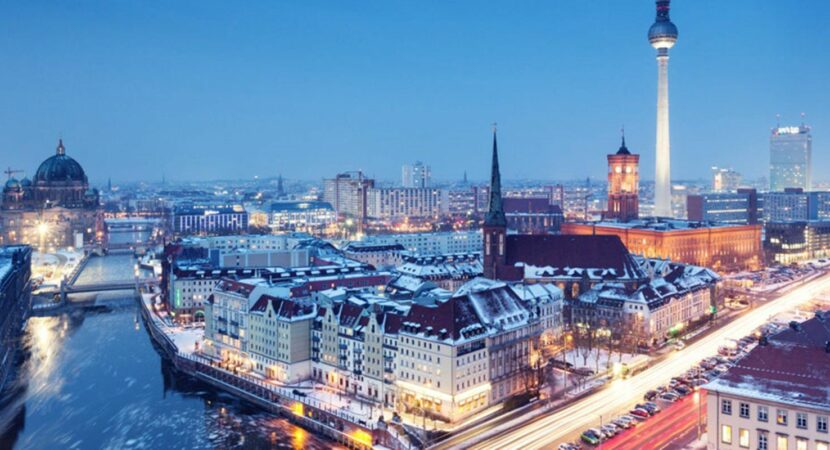
Around the world, countries have started to open their borders after weeks of closure during the coronavirus pandemic. In Europe, the situation is still uncertain, and each country is imposing its own timetable and rules for reopening its borders.
Since the beginning of July, the EU has informed that the bloc opens its external borders to 15 countries. They are Algeria, Australia, Canada, Georgia, Japan, Montenegro, Morocco, New Zealand, Rwanda, Serbia, South Korea, Thailand, Tunisia, Uruguay and China (subject to confirmation of reciprocity).
However, member states are not legally required to follow these recommendations. According to the EU, the list will be updated every two weeks.
ALBANIA
Commercial flights started in Albania on 15 June. All European residents and citizens can enter Albania. You can fly to Albania from Austria, Germany, Greece, Italy, Serbia, UK and Turkey.
AUSTRIA
It opened its borders on June 4 to Germany, Switzerland, Liechtenstein, Slovakia, Slovenia, Hungary and the Czech Republic and Italy on June 16. Travelers from Portugal, Sweden and the UK must self-isolate for two weeks. If you are traveling to Austria from any other country, you must present a medical certificate proving that you have a negative COVID-19 test (the certificate cannot be older than four days).
BELGIUM
Belgium has opened its borders with the EU, the UK and Switzerland, Liechtenstein, Iceland and Norway. There is no quarantine condition or health certificate.
BOSNIA AND HERZEGOVINA
It is only open to people from Croatia, Montenegro and Serbia. Exceptions include freight drivers, residents and diplomats.
BULGARIA
On June 1, Bulgaria's borders were opened to Andorra, Monaco, the United Kingdom, San Marino, Service and North Macedonia, as well as Bosnia and Herzegovina and Montenegro. However, exemptions remain for Belgium, Portugal, Sweden and the United Kingdom, which must self-isolate for 14 days.
CROATIA
It opened its borders in mid-May, with no restrictions for nationals from the Czech Republic, Hungary, Austria, Estonia, Latvia, Lithuania, Poland, Slovenia, Germany and Slovakia. However, on June 25, Croatia imposed a quarantine on travelers from North Macedonia, Serbia, Kosovo and Bosnia. Borders remain open for UK and EU citizens with no need for quarantine.
DENMARK
Most of Denmark's borders have reopened to EU countries. However, Denmark remains closed to Sweden and Portugal, but a list of open and closed countries is updated weekly.
FINLAND
As of June 15, Finland has allowed travelers from Norway, Denmark, Iceland, Latvia and Lithuania to enter without the need for quarantine. On July 13, travel restrictions for Germany, Italy, Austria, Greece, Switzerland, Slovakia, Slovenia, Hungary, Liechtenstein, Ireland, Cyprus and Croatia will be lifted.
FRANCE
Travelers from EU member states can visit France from June 15, without the need to quarantine on arrival. However, travelers from Spain and the UK are being asked to voluntarily self-quarantine for 14 days.
GERMANY
On June 15, Germany's border restrictions for travelers from the EU, Norway, Iceland, the United Kingdom, Liechtenstein and Switzerland were lifted. Germany opted to extend its travel warnings outside the EU until August 31.
ITALY
After a nationwide lockdown that came into effect on March 9, Italy opened its borders on June 3 to the EU, UK, Schengen area, Andorra and Monaco, as well as Vatican City and San Marino. Travelers from these countries do not need to leave quarantine unless they are in a different country 14 days before arriving in Italy.
THE NETHERLANDS
Now EU citizens, including British nationals, can enter the Netherlands. Those entering from the UK and Sweden are being asked to self-isolate for 14 days. There are still strict requirements regarding social distancing, shaking and hand washing.
NORWAY
Travelers from EEA/Schengen countries with acceptable levels of infection will be able to visit the country from 15 July. The Norwegian Institute of Public Health will update a map showing areas with exemptions from the quarantine tax on July 10. The list will be updated every two weeks. Those leaving Norway for international travel are required to self-quarantine for 10 days.
RUSSIA
On June 8, Russia partially reopened its borders. The government said it is permissible to travel abroad for professional, medical or study purposes, as well as caring for relatives. There is no date for restarting international flights that were interrupted at the end of March.
SPAIN
On June 21, Spain opened its borders to the UK, EU member states and Schengen area countries, none of these travelers need to self-isolate. Portugal was the only exception to the rule, but the border between the two countries reopened on July 1.
SWEDEN
Sweden has imposed border restrictions, but this only applies to non-essential travel from non-EU/EEA countries with the exception of the UK and Switzerland.
UNITED KINGDOM
As of June 8, visitors from abroad were required to self-quarantine for 14 days. Countries exempt from this measure include those traveling from the Isle of Man, Channel Islands and Ireland. As of July 3, the UK has announced plans to remove its quarantine rule for several countries it considers to be low risk, including France, Spain, Germany and Italy. On the 10th of July, this came into effect, meaning that people traveling from these countries will not need to self-isolate for 14 days.












